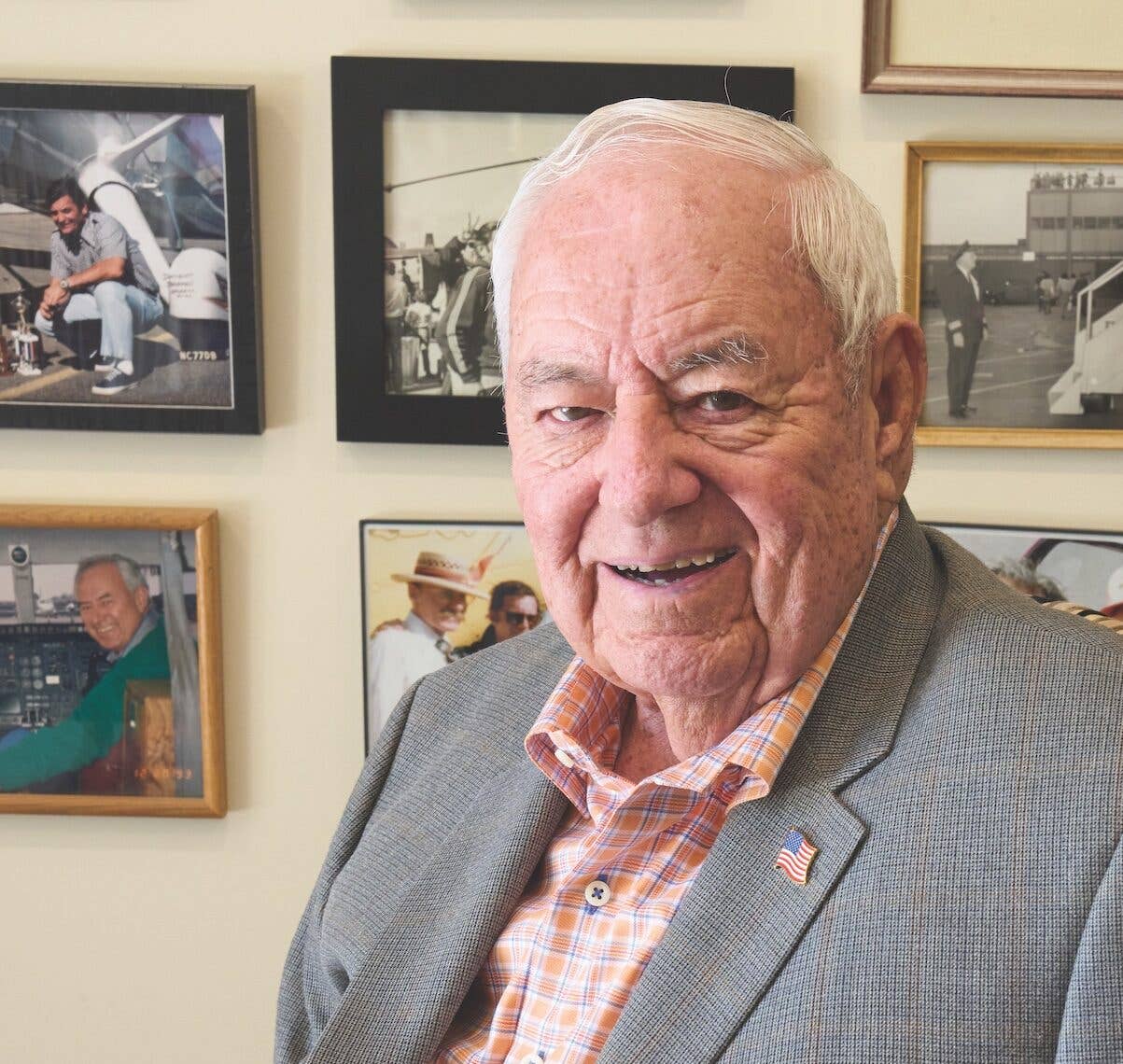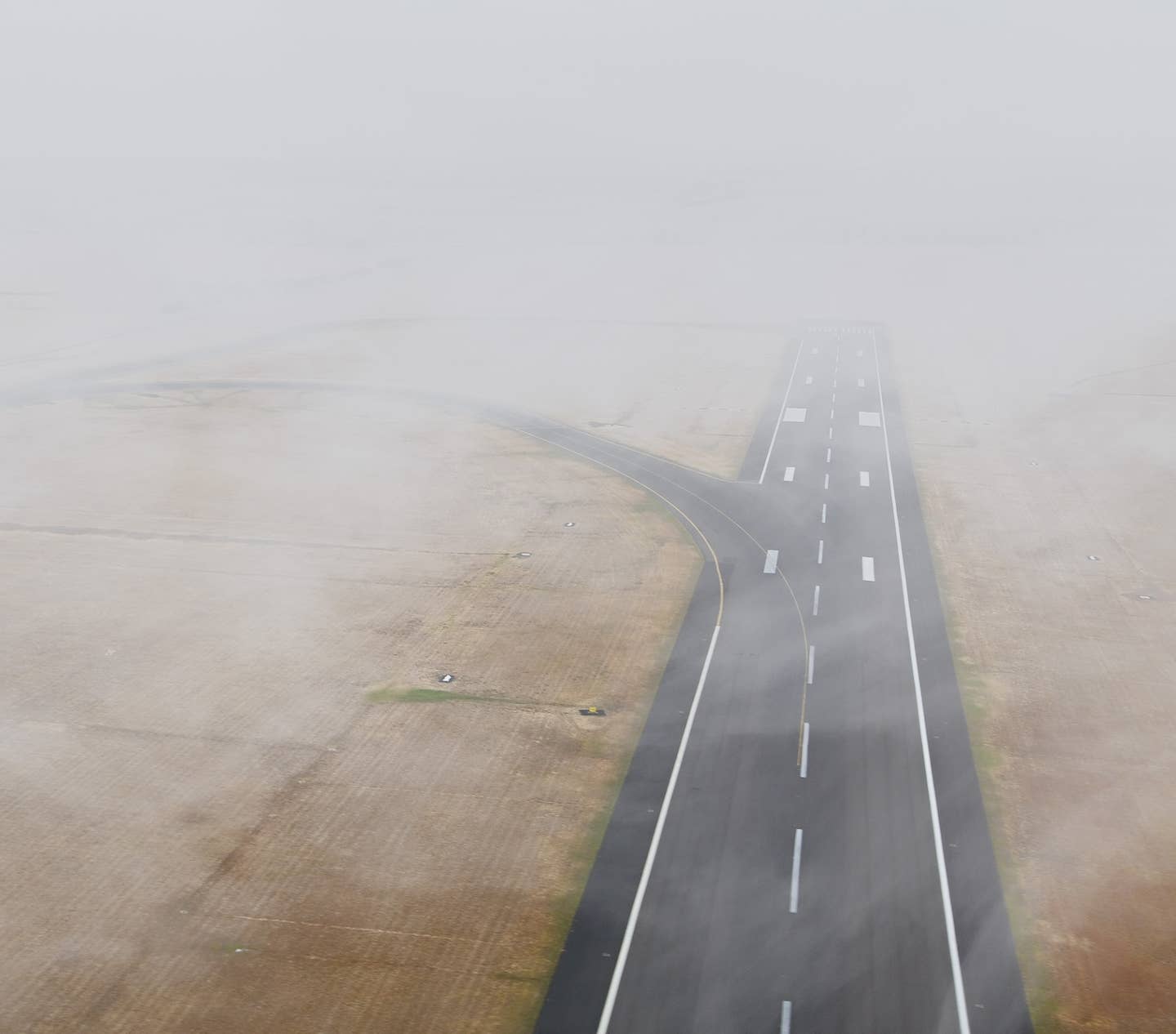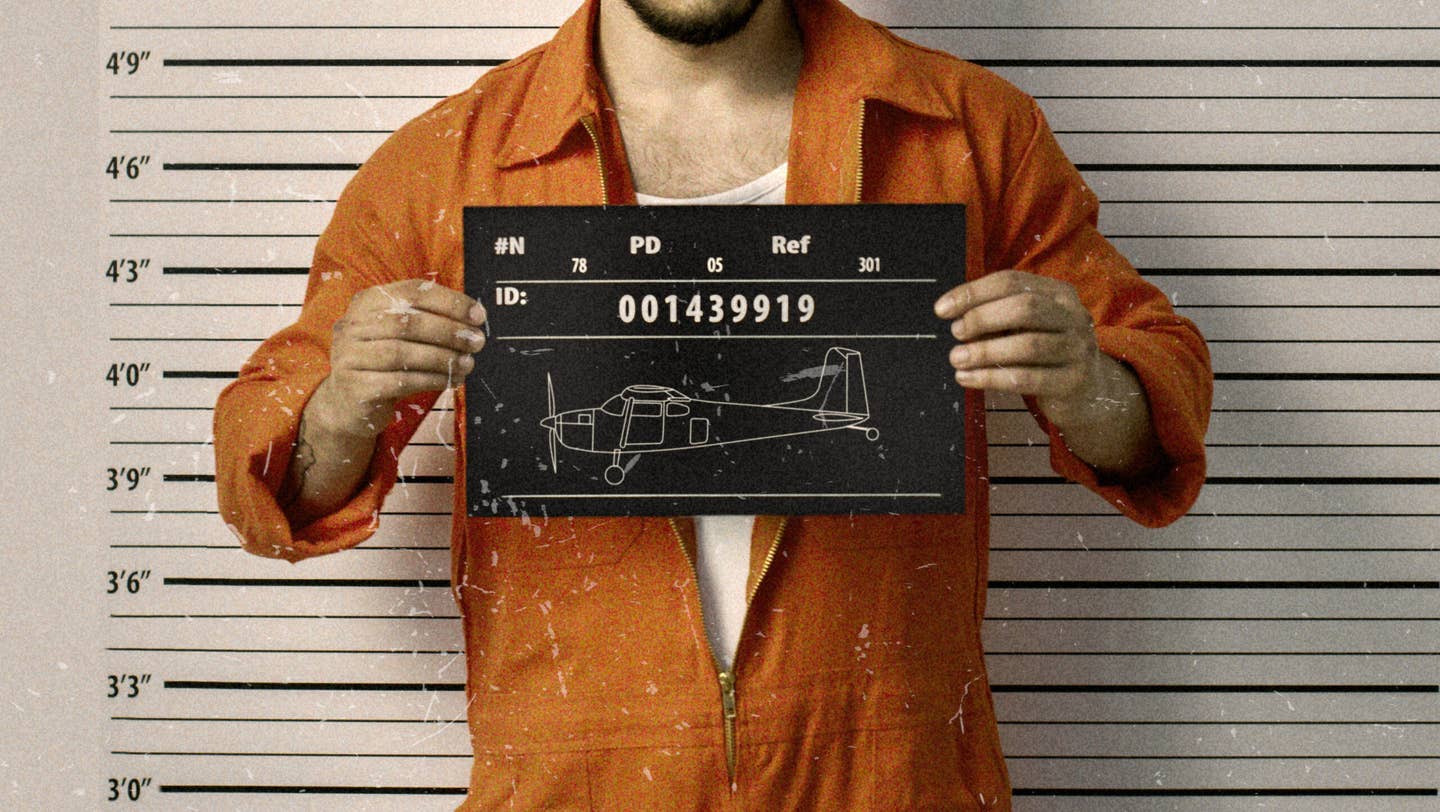A Life in Pursuit with Clay Lacy
In a long and storied career, Clay Lacy has notched extraordinary experiences in commercial and business aviation, the military, and air racing.

Clay Lacy’s career has spanned an incredible range of experiences in commercial and business aviation, and air racing. [Credit: Jeff Berlin]
Born on August 14, 1932, in Wichita, Kansas, Clay Lacy came by his lifetime in aviation honestly from the very beginning. He began flying at age 12 and had 1,000 hours by the time he joined United Airlines as a Douglas DC-3 copilot at age 19 in 1952. At UAL he also flew the Convair 340, DC-4, DC-6, DC-7, DC-8, DC-10, and Boeing 727. He retired off the Boeing 747-400 in 1992, holding seniority number 1. He set an around-the-world record in a Boeing 747SP in 1988, making it in 36 hours, 54 minutes, and 15 seconds—and raising $530,000 for children’s charities.
In 1964, Lacy was a demonstration pilot for Pacific Learjet, and he flew one of the first Learjet 24s into Van Nuys, California (KVNY), an airport that would become identified with him over the years—from the Air National Guard, to the charter company that he founded there in 1968, to the movie One Six Right, released in 2005, which capped his career as an actor and photo pilot. Lacy helped develop the Astrovision camera system mounted on Learjets and others. With it, he filmed for Bombardier, Boeing, and Lear, as well as other manufacturers, not only for marketing efforts but also flight test segments. Film credits for the Astrovision system include Flight of the Intruder, The Great Santini, Armageddon, and Top Gun.
If you're not already a subscriber, what are you waiting for? Subscribe today to get the issue as soon as it is released in either Print or Digital formats.
Subscribe NowLacy raced airplanes as a passion, and served as president of the Air Racing Association from 1966 to 1970. He won the Unlimited category at the National Air Races at Reno in the stunning purple P-51 Mustang, Miss Van Nuys, he owned for many years. In 2010, he received the FAA Wright Brothers Master Pilot Award and was inducted into the National Aviation Hall of Fame.
Now, Lacy continues to give back, just as he always has over his career. Today, he’s working with the Aviation Youth Mentoring Program (AYMP, www.aymp.world), a women-owned and child-centered nonprofit committed to involving and inspiring underserved communities through aviation. AYMP students had the privilege to meet Lacy in person at the Van Nuys airport and learn what it takes to be an aviator. Through the Clay Lacy AYMP Flight Scholarship, Lacy has funded 12 students in 2023 for their private pilot certificates, and aviation management and/or aerospace education.
FLYING Magazine (FM): You started flying early in life in Wichita. Can you share a story from those teen years when you first took flight?
Clay Lacy (CL): I remember seeing my first airplanes when I was five years old. There was Continental Airlines flying into Wichita from Denver [Colorado], same time every day, in a Lockheed 12—smaller than a DC-3—and I’d watch it every day. When I was eight years old, my mother took me for a ride in a Staggerwing Beechcraft at the airport—I was into model airplanes by then. When I could see my house from the air, I just thought this was great. From that time until I was 12, occasionally, I would get a few dollars and buy a ride. My grandmother had a farm outside of Wichita...and across the road was a golf course, and in 1944 a guy named Orville Sanders started bringing airplanes in there. I started going over there and helping him. [My grandmother agreed to rent land to Sanders] and three weeks later there were airplanes landing there. So from the time I was 12, I got to fly almost every day.
FM: In flying for United Airlines, you saw the breadth of some of the greatest transport category airplanes ever built. Does one stand out as your favorite?
CL: I had a great career at United—a good company—I had the opportunity to be copilot on a DC-3 for my first year with United. The Convair came in new in 1952, so a year later—they had a contract with the union so the company just assigned people to be copilots—I was assigned it and what a lucky thing that was. It was a modern airplane, with a lot of new systems and good things—and just a great opportunity.
FM: You flew the Learjet early on, and worked with the company and Bill Lear. Any stories to share from that time?
CL: I was really immersed in corporate aircraft sales at an early age, and then I became manager of sales for Learjet in [11] western states in 1964, and with Al Paulsen and his company. I introduced Bill Lear—and his company got the distributorship for those states. I flew the Learjet and I met so many people, like half of Hollywood, giving them demonstrations on Lears. It was a great period in my life. And I started my own charter company in 1969.
FM: For the first flight of the “Pregnant Guppy,” how did that come about?
CL: There was a fellow in the Guard named Jack Conroy. He was always into something new. He had set a record in F-86s from LA to New York and back in one day. He ended up in 1961 building the Pregnant Guppy airplane, which is a big airplane—it would carry the [Saturn rocket] engines that would take man [up to] the Moon, in the Apollo program. Jack would build a lot of airplanes in those days, and I was test-flying most of them. So we flew the Guppy in September 1962—at the time it was considered the world’s largest airplane. It lost some speed—about 18 percent at a given altitude. But Boeing was interested in the project because they were in the process of building the 747. They were interested in how much performance it was going to lose [with the wider cross section]. They were very happy when the numbers came in.
FM: Any good memories of flying the F-86? What was it like balancing the flying with United and keeping your commitment to the Air National Guard?
CL: In January 1954, I went into the air force pilot training for 20 months and was in Georgia, Greenville, Mississippi; Del Rio, Texas; and Las Vegas, Nellis Air Force Base. I came back to United Airlines and the [Air National Guard] in September 1955. I got to fly F-86s on my days off [from the airline]—it was a great life. [The F-86] was a great airplane—I loved it. It was new to the USAF, then the Guard got it during the Korean War. I became head of instrument training for the Guard, and it gave me the opportunity to fly with the general, wing commander, and group commander. We had problems in the Guard, they had had several accidents—like seven accidents in one year—the year before I came in. They were primarily people on cross-countries, with problems in instrument flying. They had a big inspection—and our Air Force advisor chose me to do the instrument flying. I really knew a lot about it because of my job with United. When the inspection was over, he gave me a ’10,’ the highest score he could give me.
FM: What drew you to the P-51, and to race it in the Unlimited Class at the first Reno Air Races?
CL: I always thought it would be fun to do the air racing—I had never done it. I was flying for United, early January 1964, into Reno [Nevada], and I got snowed in one day and I was walking around downtown, and I went by the Chamber of Commerce’s office. They had a sign in the window that the air race was coming in September, and I went in and got the information on it. The next day I was back in Al Paulsen’s office, and I said, ‘They’re gonna have races in Reno, and I’d like to get an airplane and fly it, a P-51.’ He looked shocked, and he said, ‘I just talked to a guy on the phone, and he wants to trade me a P-51 on a Cessna 310 he had for sale.’ The guy was in Lewiston, Idaho. In those days, the P-51s weren’t worth near as much as they are today. So Al wanted $17,500 for the Cessna 310, and...Al told him [he’d give him] $7,500 on the P-51. It was low time, one of the very last ones built— and it flew very nicely.
FM: You’ve made the move from pilot to philanthropist full-time—but you’ve been involved with charitable work all of your career. Tell us about the Clay Lacy Foundation, and the Aviation Youth Mentoring Program you’re involved in now—and what drives you to support kids?
CL: It’s something that I got into some time ago, just overall supporting kids. It’s been a good experience. I’ve had so much fun in aviation—I’m told I might be the highest-time pilot; I have over 55,000 flight hours. I love people in aviation—they’re good, honest people, I think. You tend to be honest in aviation, because if you’re not, you get in trouble if you’re a pilot. So they make good role models for young people. If [a young person] is really interested, they need to meet people who are in aviation who can sponsor them and help get them going.
Quick 6
Is there anyone living or dead who you would most like to fly with?
So many good friends...one being Bill Lear
If you could fly any aircraft that you haven’t flown yet, what would it be?
Several aircraft that I’ve filmed but not flown—like the SR-71
What’s your favorite airport that you’ve flown into?
When I was flying the line for United, Hong Kong’s Kai Tak Airport
What do you believe has been the biggest innovation breakthrough or event in aviation?
With the advances we’ve made in supersonic flight by the 1950s, I’m surprised we’re not flying faster now. But the increase in safety—it’s remarkable.
What is one important life lesson you’ve learned from being a pilot?
Learn all that you can—always be on the lookout to learn something new.
When not flying or promoting your charitable foundation, what would you rather be doing?
I have a place in Idaho, in the mountains. But, the main thing has always been airplanes and the people in aviation.

Sign-up for newsletters & special offers!
Get the latest FLYING stories & special offers delivered directly to your inbox







